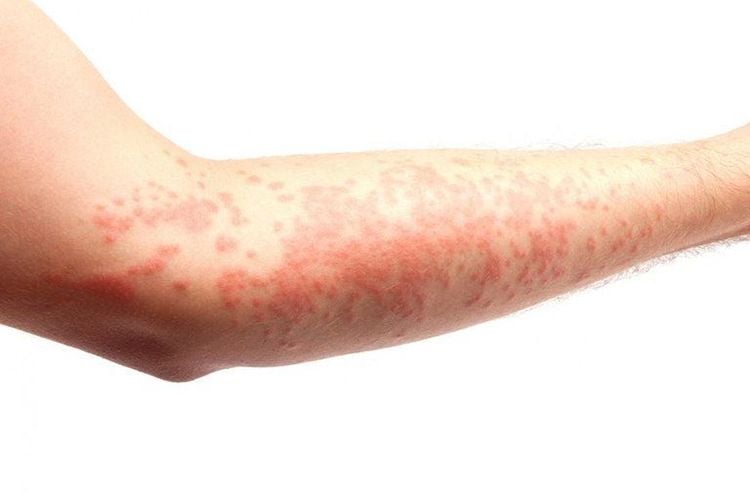This is an automatically translated article.
Penicillin is an antibiotic commonly used to treat bacterial infections. A penicillin allergy can cause fever, rash, vomiting, and worse, anaphylaxis, a serious, life-threatening reaction if not treated promptly.1. What causes a penicillin allergy?
Penicillin is a beta-lactam antibiotic. The bactericidal action of penicillin is based on inhibition of the bacterial cell wall. Penicillin allergy occurs when the immune system becomes hypersensitive to the drug. The mechanism of penicillin allergy is that before the immune system can become sensitive to penicillin, the patient must be exposed to the drug at least once. The next time the drug is administered, specific antibodies recognize penicillin and attack it directly. The chemical mediators released by this reaction cause the signs and symptoms associated with the allergic reaction.
In addition to penicillin, other antibiotics, especially those with chemical properties similar to penicillin, can also lead to allergic reactions. Antibiotics that can cause allergies include: Amoxicillin, Ampicillin, Dicloxacillin, Penicillin G, Penicillin V, Piperacillin, Ticarcillin, Cefaclor, Cefadroxil, Cefazolin, Cefdinir, Cefotetan, Cefprozil, Cefuroxim,... to penicillin allergy including:
History of other allergies, such as food allergies or hay fever; Allergic reaction to another drug; Family history of drug allergies; Increased exposure to penicillin, because of high doses, repeated use, or prolonged use; Certain illnesses are often associated with allergic drug reactions, such as HIV infection or the Epstein-Barr virus.
2. What are the signs of a penicillin allergy?
Signs and symptoms of a penicillin allergy usually occur within an hour of taking the drug. In some less common cases, reactions can occur hours, days or weeks later. Signs of a Penicillin allergy may include:
Skin rash; Hive; Itchy; Fever ; Swelling; Shortness of breath Wheezing; Have a runny nose; Itching, watery eyes; Anaphylaxis .
3. Is penicillin allergy dangerous?

Dị ứng penicillin có thể gây ra một số triệu chứng sau, gồm: nổi mề đay, phát ban và ngứa
Allergy to penicillin can cause some of the following symptoms, including: hives, rash, and itching. A more severe reaction is anaphylaxis. Anaphylaxis is a rare, life-threatening allergic reaction that causes dysfunction of body systems. Signs and symptoms of anaphylaxis include:
Constriction of the airways and throat, making it difficult to breathe; Nausea or abdominal cramps ; Vomiting or diarrhea; Dizzy; Weak, fast pulse; Lower blood pressure; Epilepsy ; Loss of consciousness.. Also, an allergy to penicillin can lead to a less common problem, which usually occurs days or weeks after exposure to the drug and can persist for some time after stopping use. Medications:
May cause fever, joint pain, rash, swelling and nausea Drug-induced anemia, decreased red blood cells, can cause fatigue, irregular heartbeat, shortness of breath and other signs and symptoms Other symptoms Drug reaction with eosinophilia and systemic symptoms (DRESS), resulting in rash, high white blood cell count, swollen lymph nodes, and recurrent hepatitis infection Inflammation in the kidneys (nephritis) , which can cause fever, bloody urine,
4. How to prevent penicillin allergy
If you have a penicillin allergy, the best prevention is to avoid the medication. In addition, the following measures may be taken:
Inform medical personnel: Make sure that a penicillin allergy or other antibiotic allergy is clearly identified in your medical record Wear a warning bracelet Confirmation of Drug Allergy Alert Bring epinephrine emergency: If an allergy has caused anaphylaxis or other serious reactions, your doctor will likely prescribe a self-injector and epinephrine auto-injector.
Please dial HOTLINE for more information or register for an appointment HERE. Download MyVinmec app to make appointments faster and to manage your bookings easily.
Reference source: Mayoclinic.org












